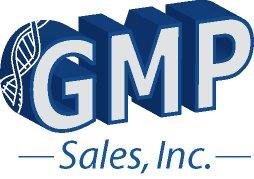What is a well plate
used for in Chemistry?
A well plate, commonly referred to as a microplate or microtiter plate, is a flat plate with multiple "wells" that serve as small test tubes. These plates play a significant role in many chemical, biological, and pharmaceutical applications due to their ability to hold small volumes of samples. The number of wells can vary, with 96-well plates being among the most popular, but 24-well, 384-well, and other formats are also available depending on the specific requirements.
Key Applications of Well Plates:
1. Sample Storage and Organization:
Well plates enable scientists to store numerous samples in a structured manner. In chemistry labs, they might be used to house various solutions, reagents, or reaction mixtures to be tested or analyzed. This organization aids in efficient experimentation, especially when dealing with many similar or related samples.
Efficient Sample Management: Well plates provide a structured system for storing numerous samples. This is particularly useful in chemistry labs, where they can be used to organize various solutions, reagents, or reaction mixtures.
Ease of Identification: Samples in well plates can be easily labeled and tracked, which is crucial when handling many similar or related samples. This leads to better management and reduces the risk of mix-ups.
Scalability: Depending on the experiment's needs, well plates with different numbers of wells (e.g., 96, 384, or 1536 wells) can be used, allowing scalability in sample storage and organization.
2. High-throughput Screening (HTS):
In pharmaceutical and biochemical research, well plates are indispensable tools for HTS. This method involves screening thousands to millions of samples for a particular activity, such as enzyme inhibition or activation. Using well plates, especially those with a large number of wells, like 384-well plates, makes it feasible to quickly test many samples under identical conditions.
Large-Scale Screening: HTS is a cornerstone in pharmaceutical and biochemical research where thousands to millions of samples are screened for specific activities like enzyme inhibition or activation.
Standardized Conditions: Using well plates, particularly those with a high number of wells (like 384-well plates), enables testing of many samples under uniform conditions, ensuring consistency and comparability of results.
Automation Compatibility: Well plates are compatible with automated liquid handling systems and robotic platforms, facilitating rapid and accurate sample processing in HTS.
3. Spectrophotometry and Fluorescence Studies:
Well plates made of transparent materials can be used in conjunction with plate readers. These devices measure the absorbance, luminescence, or fluorescence of each well's contents. This feature is especially useful for biochemical assays where the concentration or activity of a particular compound or enzyme is being assessed.
Compatibility with Plate Readers: Well plates made of transparent materials are suitable for use with plate readers, which measure absorbance, luminescence, or fluorescence in each well.
Quantitative Analysis: This application is crucial for biochemical assays where the concentration or activity of compounds or enzymes is being measured.
Versatility in Analysis: Different types of well plates (e.g., black plates for fluorescence, clear plates for absorbance) cater to specific requirements of diverse spectrophotometric and fluorescence studies, allowing for a wide range of experimental setups.
Well plates, adhering to Good Manufacturing Practices (GMP), are indispensable and versatile tools in the life sciences and chemistry laboratories. They excel in streamlining many processes by providing a systematic and SBS (Society for Biomolecular Screening) compatible approach to handling numerous samples simultaneously. This compatibility ensures that well plates can seamlessly integrate with a variety of automated liquid handling systems, which is fundamental in HTS and other large-scale experimental setups. Their compact design not only allows for the efficient use of reagents, thereby reducing waste but also ensures the economic feasibility of experiments where reagent cost is a concern. In tandem with other laboratory equipment, well plates facilitate rapid and accurate results, making them a cornerstone in modern laboratory practices. These plates, when used in automated and semi-automated systems, significantly enhance the efficiency and reproducibility of experimental workflows. The combination of these features makes well plates a vital component in advancing scientific research, particularly in fields that demand precision, efficiency, and scalability.

